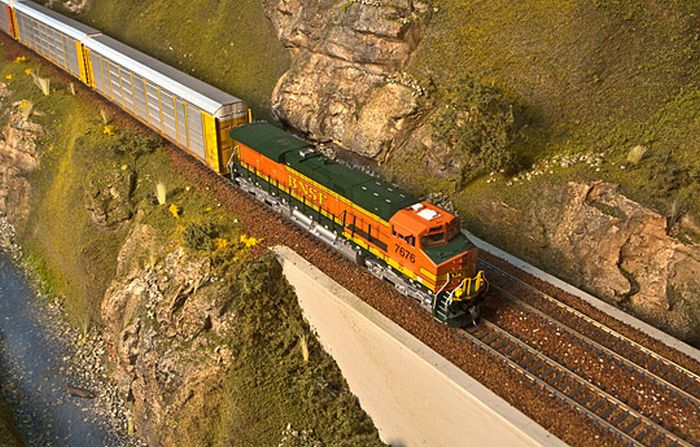|
|
Railway Modelling
|
The oldest society is The Model Railway Club (established 1910), near Kings Cross, London, UK. As well as building model railways, it has 5,000 books and periodicals. Similarly, The Historical Model Railway Society at Butterley, near Ripley, Derbyshire specialises in historical matters and has archives available to members and non-members.
Scales and gauges
The size of engines depends on the scale and can vary from 700 mm (27.6 in) tall for the largest ridable live steam scales such as 1:8, down to matchbox size for the smallest in Z-scale (1:220). However, there is another scale that was introduced in 2007 that is also commercially available, called T Gauge, it is 3 mm (0.118 in) gauge track and is a scale of 1:450, basically half the size of Z scale. A typical HO (1:87) engine is 50 mm (1.97 in) tall, and 100 to 300 mm (3.94 to 11.81 in) long. The most popular scales are: G gauge, Gauge 1, O gauge, S scale, HO gauge (in Britain, the similar OO), TT scale, and N scale (1:160 in the United States, but 1:144 in the UK). There is growing interest in Z scale and T Gauge. HO and OO are the most popular. Popular narrow-gauge scales include Sn3, HOn3 Scale and Nn3, which are the same in scale as S, HO and N except with a narrower spacing between the tracks (in these examples, a scale 3 ft (914 mm) instead of the 4 ft 8 1⁄2 in (1,435 mm) standard gauge).
|
|









